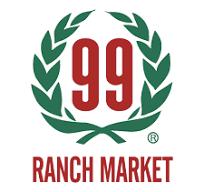The Scenic Route: Tales of Independent Grocers
PAGE 16

Buckle up: It’s a bumPy ride to the governor’s race PAGE 34
Turn Left: San Diego’s new progressive politics has businesses paying attention PAGE 24

The Scenic Route: Tales of Independent Grocers
PAGE 16

Buckle up: It’s a bumPy ride to the governor’s race PAGE 34
Turn Left: San Diego’s new progressive politics has businesses paying attention PAGE 24



EXECUTIVE COMMITTEE
CHAIR APPOINTMENTS
Independent Operators Committee Chair
Chair Michel LeClerc
North State Grocery, Inc.
Immediate Past Chair
Lynn Melillo Bristol Farms
Joe Mueller Kellanova
Elliott Stone Mollie Stone’s Markets
DIRECTORS Ryan Adams Gelson’s Markets
HeeSook Alden
Certified Federal Credit Union
Joe Angulo Chedraui USA, Inc.
Steve Brancamp United Natural Foods, Inc.
Elaina Budge Costco Wholesale
Rocky Campbell C & K Market, Inc.
Dorothy Carlow Mother’s Market & Kitchen
Chris Dehoff
Dehoff’s Key Market
Jon Giannini Nutricion Fundamental, Inc.
CALIFORNIA GROCERS ASSOCIATION
President/CEO
Ronald Fong
Senior Vice President &
Chief Operating Officer
Doug Scholz
Vice President
Government Relations
Daniel Conway
Executive Director
Events & Sponsorship
Beth Wright
Vice President
Communications & Public Affairs
Nate Rose
Director Local
Government Relations
Tim James
First Vice Chair
Richard Wardwell
Superior Grocers
Second Vice Chair
Jonson Chen
Tawa Supermarket, Inc.
Subriana Pierce
C.A. Fortune
Sergio Gonzalez
Northgate Gonzalez Markets
Justin Hyer
Molson Coors Beverage Co.
Tyler Kidd
MarVal Family Stores
Andrew Knight Instacart
Nick Malm
Reyes Coca-Cola Bottling LLC
Brady Matoian OK Produce
Brendan McAbee
Bimbo Bakeries USA
Kelli McGannon
King Soopers
JR Medina
Super A Foods, Inc.
Director CGA Educational Foundation
Brianne Page
Vice President
People Operations & Administration
Jennifer Gold
Senior Manager
Marketing & Membership
Sunny Porter
Communications
Manager
Grace Becker
Senior Manager
Business Development
Bailey Dayen
Controller
Scott Inman
Treasurer
Pamela Burke Grocery Outlet, Inc.
Secretary Bertha Luna Stater Bros. Markets
Karl Schroeder Albertsons Companies
Candace Minto
PepsiCo Beverages North America
Michael Molinar
PAQ Inc.
Tim Nowell
Procter & Gamble
Brenda Palomino
Amazon
Bethany Pautsch
Tyson Foods, Inc.
Eric Pearlman
C&S Wholesale Grocers
Brian Pohl
Classic Wines of California
Adam Salgado
Heritage Grocers Group
Nick Sass
The Hershey Company
Executive Assistant & Board Relations Specialist
Delaney Faulkner
Senior Accountant &
Assistant Office Manager
William Quenga
California Grocer is the official publication of the California Grocers Association.
1005 12th Street, Suite 200 Sacramento, CA 95814 (916) 448-3545 (916) 448-2793 Fax cagrocers.com
For association members, subscription is included in membership dues. Subscription rate for non-members is $150.
Casey Scharetg Gallo
Greg Sheldon Anheuser-Busch InBev
Diane Snyder Whole Foods Market
Chang So Hollister Super, Inc.
Brad Thomas
Kimberly-Clark Corporation
Joe Toscano
Nestle Purina PetCare
Kevin Young Young’s Payless Market IGA
© 2025 California Grocers Association
Publisher Ronald Fong
rfong@cagrocers.com
Editor Nate Rose
nrose@cagrocers.com
Managing Editor
Grace Becker
gbecker@cagrocers.com
For advertising information contact: Bailey Dayen bdayen@cagrocers.com

















































































































































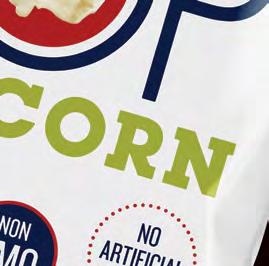










RON FONG PRESIDENT AND CEO
CALIFORNIA GROCERS ASSOCIATION
We have to move in the world to understand it
I don’t know about you, but I miss seeing Anthony Bourdain on my TV screen. From the shows “No Reservations” to the later “Parts Unknown,” Bourdain brought the viewer along for the ride, sharing in the experience of being somewhere new, exploring the endlessly unique and diverse world around us, and of course there was all that fantastic food.
Just the other day I came across a quote from him that read, “If I’m an advocate for anything, it’s to move. As far as you can, as much as you can…Open your mind, get up off the couch, move.”

This issue celebrates movement. We draw inspiration from the quintessential California summer surf safari, taking readers on a journey through the Golden State’s grocery community. Flipping through these pages you’ll find stories about one-of-a-kind independent grocers. We also venture into parts unknown and explore how local jurisdictions like San Diego have come to represent new territory in the fight to regulate grocers.
Perhaps the idea of a summer trip reads more Chevy Chase than Anthony Bourdain, and if that’s your thing, we have a little fun with the phrase “Are we there yet?” to explain
what’s going on with the 2026 California race to replace Gov. Gavin Newsom. The short answer is “no,” we still have a way to go and it’s been a fair bit of failure to launch in many regards.
Recently, I had the opportunity to do a bit of exploring alongside grocers as we loaded in a bus and drove right into the future of retail at CGA’s Retail Tomorrow tour of the Los Angeles area. After seeing a TikTok store and working with USC’s Iovine and Young School of Design, I can tell you it wasn’t just mind-opening, but mind-bending. But I feel as confident as ever that the future presents so much opportunity for the industry and
that we have the best minds ready to create the retail experiences that move us forward.
There’s a good chance you’re reading this magazine at the Association’s first-ever Gather California. I love our new brand concept because it’s an exhortation to get out into the world. With so much of life moving into digital spaces, it’s easy to discount actual connection. In fact, it’s almost like technology gives us a bit of amnesia as we forget how to forge the bonds that make life special.
At Gather we’re doubling down on connection. We have a much-improved venue, more opportunities to network, and more spaces to mingle informally. I hope to see you around the resort property making the types of relationships you can’t make or maintain from behind your desk or on a screen.
The road trip is about getting out into the world. Grabbing some friends and finding new ones. Exploring parts unknown to learn something new. As Bourdain said: Moving! We hope these pages help guide you through the state’s grocery industry, lend some food for thought, and encourage you to embrace building new relationships. ■
MICHEL LECLERC NORTH STATE GROCERY, INC.
California is an immense land of many contrasts. It is a land of rainforests and deserts, sandy beaches and alpine ski resorts, where major metropolitan centers on the coast contrast with inland rural communities, where Mount Whitney, the highest point in the contiguous United States, overlooks Death Valley, the lowest point.
As a people, the 39 million Californians are as diverse as their land. In fact, no ethnic group makes up a majority, making California one of the most ethnically diverse states in America.
The world’s fourth-largest economy also reflects this diversity and contrast. From Silicon Valley leading the way in information technology to the Central Valley making California the nation’s number one agricultural state, California has long been a destination for entrepreneurs and dreamers looking to turn their visions into reality. Innovation has been California’s calling card.


Not surprisingly, California’s grocery stores reflect this state’s incredible diversity. Thousands of grocery stores dot this land, and it is a challenge to find any two that are the same. As each store is in a distinctly different corner of this incredibly diverse state, and home to a unique blend of people who shop there, savvy operators will figure out how to best deliver a satisfying shopping experience to the locals. This is most apparent in stores run by independent operators who have fewer stores, possess a deep understanding of their local customer base and can quickly respond to changing demands. However, even chain operators who seek greater efficiency of standardized operations differ in their strategies and tactics for reaching California shoppers, and they are constantly adjusting and adapting to their shoppers as well.















Ironically, the one area of California that truly lacks diversity is its politics, particularly in the California legislature, where one-party rule has been in place for 50 years, the last 10 of which the Democrats have held veto-proof supermajorities. Most of these legislators come from urban areas, further contributing to an atmosphere where
diversity of thought and spirited debate has given way to uniformity of opinion.

One of those opinions is that the legislature should be mandating how grocers operate their business. Despite many historical examples of central government planning crushing dynamic, innovative and vibrant economies, many, if not most, California legislators do not see the folly of imposing “one-size-fits-all” operational mandates on every grocery operator.

For the last two years, the industry has been up against a proposed law dictating how grocers utilize self-checkout technology, requiring certain staffing requirements and even going so far as to prescribe how many and what items can be checked out. The mandate would apply to all stores, regardless of size or location, from Alturas to downtown Los Angeles, from mom and pop to large chains.
This year, the proposal was made into a two-year bill, meaning the industry will be fighting against it for a third year in a row.
The hubris of the legislature would be shocking if it wasn’t so routine. Grocery operators spend their working hours trying to serve their customers better than the competition. Some ideas work. Some ideas fail. But competition requires that they keep trying to improve. This process of innovation is being done daily in thousands of grocery stores across California. Shoppers pick the winners and losers in this competition with their dollars.
In a state as diverse as California, that prides itself on being a center of innovation and change, it’s ironic that the legislature,
despite opposition from grocers, seeks to handcuff every last California grocer to a state-mandated “one-size-fits-all” checkout process. Instead, Californians and grocers would both be better served by allowing shoppers to decide, with their purchasing dollars, which grocers provide a checkout experience that best meets the needs of their unique community. ■

KEVIN COUPE FOUNDER MORNINGNEWSBEAT.COM
Why “good enough” isn’t enough to stay relevant
Last month, I had the opportunity to be part of a unique “immersion” that was hosted by CGA for members of its board—a day-long Retail Tomorrow event that took attendees away from the day-to-day intricacies of running a business. For just a few hours, they were encouraged to consider the challenges and opportunities that will present themselves in the future, and how to take advantage of both.
“The future.” That’s a word that is both loaded and vague, hard to define and difficult to characterize. Are we talking about tomorrow? (I mean, literally, tomorrow.)
Or are we talking about some Star Treklike future in which one will simply speak to a “replicator,” say Earl Grey, hot, and it magically will appear in front of you, brewed to previously downloaded specifications?
To me, there is a lot of distance between those two futures, and when considering what Retail Tomorrow might look like, it is important not to be constrained by intellectual or imaginative gravity.
The parameters—such as they were, since these kinds of discussions work best if one assiduously avoids parameters—were set by Deborah English of D.L. English Design, who worked with AI designer Adrian Curiel (the AI connection will become clear shortly)
to establish a half-dozen trends that we thought are likely to help define the store of tomorrow.
Those trends were:
• “Digital Aisles” (or how the physical aisle can approximate the digital/social media experience.
• “Sensory Drenching,” or how experiential design can reflect strategic vision.
• “Fresh Forward,” in which fresh food departments serve as a store brand’s energy source, signal of trust, and emotional anchor.
• “Centerpiece,” establishing center store as more than just a wall of cans, bottles and bags, but rather reframing the brand in a way that is creative and curated.
• “Outflow,” which is all about logistics as a symbol and reflection of a store’s brand and value proposition.
• “Formats,” with a focus on rethinking a store’s footprint, rightsizing for cultural relevance, speed and, perhaps most importantly, soul.
Now, you or I probably could come up with another six or twelve or eighteen different emerging trends without much effort. Ours were not designed to be the six definitive trends, but rather six trends that would
allow us to shape a broader conversation. The kind of conversation, I would add, that every retailer should be having internally. Our goal was to have the fifty or so CGA members attending the Retail Tomorrow event—broken up into smaller groups—to apply these trends to four different retail formats: conventional, small store, fresh forward/ethnic, and discount/value-focused. Which underlines something that I think is important—innovation and imagination need not be limited to upscale stores with a fresh food focus. That’s a bias that I think a lot of retailers bring to any such conversation, and I think it is not just flat wrong, but lazy.
I would argue that continued innovation and imagination have to be applied to every format, every day. Not only because it is a nice thing to do, but necessary to do in order to ensure survival.
And that’s the real point I want to make.
You should have noticed that there was a lot of reporting—including on my website, MorningNewsBeat—in late August about Amazon’s announcement that “customers in more than 1,000 cities and towns can now order fresh groceries with their SameDay Delivery orders, with plans to expand to over 2,300 across the U.S. by year-end.”


Amazon said that the expansion “marks one of the most significant grocery expansions for Amazon as the company introduces thousands of perishable food items into its existing logistics network that is already optimized for speed and efficiency. Customers will have the option to order produce, dairy, meat, seafood, baked goods, and frozen foods, alongside the millions of items such as everyday household essentials, electronics, fashion, home and garden, and more already available for Same-Day Delivery on Amazon.com.”
I’ve spent a lot of time thinking about this, and even more time chatting about it with my friend Tom Furphy (who began his grocery career at Wegmans and is the guy who engineered Amazon’s original entry into the supermarket space). Whether or not Amazon finally has figured out the fresh food side of grocery, it would appear that it finally is at the point where it is making a significant commitment and investment to the space, going national with this initiative. It already has figured out much of the center store business—it already has a national customer base of more than 150 million Americans, with annual sales of groceries and household essentials (not including Whole Foods and Amazon Fresh) of more than $100 million. Making it, in fact,

already bigger in terms of gross revenues than all but a few supermarket chains.
My goal here is not to be like Chicken Little. I don’t think the sky is falling. Amazon has gone down the brick-and-mortar road before, and leadership there has acknowledged that the results have been less than satisfactory. And in online sales of fresh foods, it has been far less of a player than many of us might have expected a decade ago.
But.
One can expect that, however it changes strategies and tactics, Amazon is going to keep coming. In addition, there likely will be new players that will identify white space that needs to be filled, and will create new and exciting (and even sometimes successful) business models.
Bringing me back to my original point— which is what CGA was hammering home with its Retail Tomorrow immersion event.
Whatever you are doing now isn’t enough. Good enough isn’t enough. Yesterday’s successful business plans aren’t enough. Not nearly enough.
It is critically important that you look at your stores, your markets, and your customers, and identify the trends that you think will define them all going forward. And then, do what we did in our immersion, which is to step away from the day-to-day conduct of business and let your imagination loose, just for a little bit.
Theodore Levitt, a Harvard professor and economist, used to argue that many businesses suffer from “marketing myopia,” focusing on what exists rather what can or should exist to serve customer needs. And, he observed, “Creativity is thinking up new things. Innovation is doing new things.”
Including, I think, creating your own Retail Tomorrow.
No time like the present to do so. ■
JENNIFER HATCHER CHIEF PUBLIC POLICY OFFICER AND SVP, GOVERNMENT AND MEMBER RELATIONS, FOOD MARKETING INSTITUTE
Summer is often a time for Americans to take a break from their normal routines and enjoy splurging on things they normally wouldn’t during the rest of the year.
As the summer months come to an end, we typically revert back to our old routines, but sometimes the summer helps us develop new ones as well. This is especially true for grocery shopping.
FMI recently surveyed grocery shoppers on their habits around meal occasions to understand where and how they’re prioritizing meals and snacks at home.
Our report, U.S. Grocery Shopper Trends 2025: New Routines, finds that shoppers’ meal routines remain fragmented. Just 64% eat dinner regularly, and fewer still eat lunch or breakfast.
Regardless of routine, “eating well” is an important consideration and aspiration for shoppers. However they define it, shoppers share common themes, needs, priorities and values like interest in cooking fresh, healthful food; sharing meals with friends and family; and eating ethically.
But other components of eating well are also important, with health and nutrition, as well as entertainment and enjoyment being particularly relevant during meals and convenience taking precedence with snacks. Underpinning all these meal and snack benefits is the widespread need for social eating with 82% of shoppers.
Dinner remains the centerpiece of shoppers’ eating routines, with a focus on taste, socializing and a bit of fun. Among those who eat dinner regularly, most (63%) enjoy it at home with others more often than not (four-plus times a week) and many (43%) follow at least one weekly dinner tradition in the form of a specific type of repeating dish (tacos, pizza, pasta, etc.) that eases the burden of cooking while creating a crowdpleasing household ritual.
Consumers tell us they are most consistent about eating dinner and lunch. Peak dinnertime remains at 6:00 p.m., with 36% of shoppers having dinner at home and with others seven days a week.
Health and entertainment are most important to eating well at all meals. For breakfast, shoppers seek health above all, while for snacking, combining convenience and health is a priority.
As we turn toward fall, roughly half of shoppers anticipate setting new routines around eating occasions. These include making meals at home (41%); eating dinners at consistent times (34%); eating at home with others (32%); and dining out less frequently (31%).
We also asked shoppers which meal occasions they intend to share together as a family in the future. While 54% wanted to share more dinners, an impressive 40% wanted to share more lunches and 43% wanted to share more breakfast occasions, indicating a significant opportunity to make family meals happen throughout the day.
The change in routines is even more acute for parents. Two-thirds to three-quarters expect changes depending on the meal occasion in question. However, the fact that parents are more likely than others to expect changes in both directions in the fall (i.e., both more and fewer meals at home) reflects the diverse ways that different families plan to adjust to school year schedules. Given these shifts, parents are also more likely than others to ask retailers for convenience solutions and to pursue deliberate shopping strategies.
Additionally, this school year, 96% of American children aged 12 and under will be eating lunches at school during the week, more than last school year (up eight points from last August). Most (75%) will bring lunches from home every day or at least some days. The number of parents who expect their children to eat solely lunches from home increased from 23% in August 2024 to 39%.
Taken together, food companies have a distinct opportunity to take advantage of these changing behaviors. Retailers and suppliers that are able to differentiate themselves through unique offerings that cater to health and nutrition, entertainment, enjoyment and convenience will be better equipped to drive loyalty among shoppers, particularly parents. The good news is that Americans are increasingly expecting to eat more meals at home this fall— something that is not only good for the industry but also for the health and well-being of families across the country. ■
To download the U.S. Grocery Shopper Trends 2025: New Routines report, visit www.fmi.org/grocerytrends.
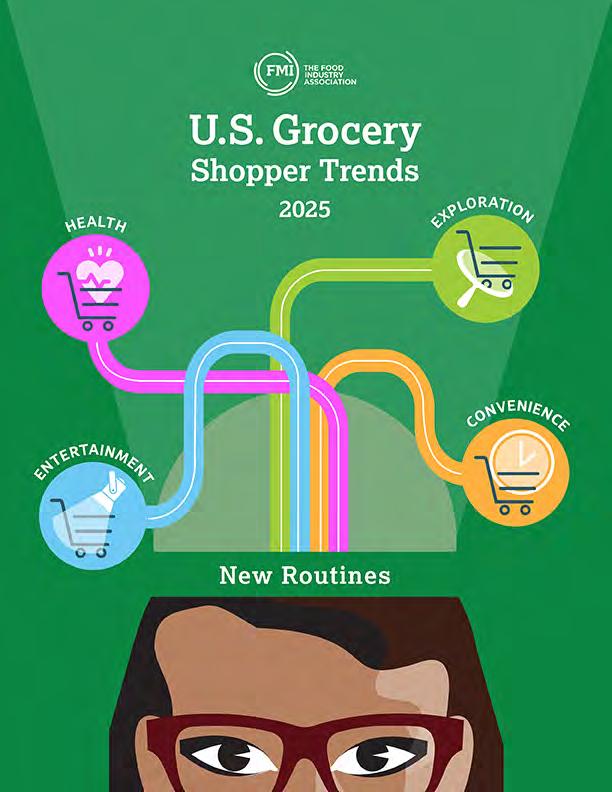





GREG FERRARA PRESIDENT AND CEO NATIONAL GROCERS ASSOCIATION
Independent grocers across the country are applauding significant policy victories following months of persistent advocacy.
With the enactment of a landmark tax package and the defense against the most damaging proposed changes to the Supplemental Nutrition Assistance Program (SNAP), NGA has delivered tangible results for independent operators and the communities they serve.
The recently enacted One Big, Beautiful Bill Act represents a milestone in the effort to create a more equitable tax environment for small and mid-sized businesses. Among its most impactful provisions is the restoration of the ability to fully expense capital investments such as equipment, refrigeration systems, and retail technology. This change, long a top NGA priority, enables grocers to deduct 100% of these expenses in the year they are incurred, rather than depreciating them over time. It offers essential financial flexibility and certainty for independent operators looking to upgrade stores, enhance efficiency, and reinvest in their teams.
The legislation also corrects a costly change to the treatment of research and development expenses. Businesses may now immediately deduct R&D costs rather than spreading them over a five-year period. This is particularly meaningful for independent grocers investing in modern tools, such as advanced inventory systems, e-commerce platforms, and digital innovations, that enhance the customer experience and
streamline operations. These reforms are not theoretical. They provide direct and immediate relief for retailers who must continually adapt to staying competitive in a rapidly evolving marketplace.
Securing these changes required sustained engagement with lawmakers, targeted education efforts, and a coordinated push from NGA members. Independent grocers made their voices heard through calls, emails, and over 175 meetings during our successful legislative fly-in, all of which reinforced the industry’s case for tax policies that support reinvestment and long-term growth.
At the same time, NGA remained focused on protecting grocers from a set of SNAP reform proposals that would have reduced SNAP sales by $300 billion over the next ten years. As Congress considered changes to the structure and administration of SNAP, NGA worked diligently to ensure grocers would have the greatest possibility for success as these changes roll out across the country. Some proposals would have disproportionately impacted independent grocers and, by extension, the communities they serve.
Thanks to strong, proactive advocacy, lawmakers adopted a less drastic approach. NGA succeeded in preserving the integrity of SNAP while staying committed to continuing
this decades-long successful publicprivate partnership. The outcome allows independent grocers to continue providing essential services to millions of low-income families without assuming unsustainable financial or operational burdens. These victories underscore the power and effectiveness of a united advocacy strategy. Independent grocers operate in a uniquely challenging business environment, characterized by intense competition, narrow profit margins, and growing regulatory complexity. NGA’s leadership in advancing tax relief and preventing damaging SNAP cost shifts demonstrates how strategic, persistent engagement with policymakers can produce real, measurable outcomes for the industry.
While these wins are significant, they are part of a broader, ongoing effort to ensure a strong and fair future for independent grocers. NGA continues to engage on issues ranging from swipe fee reform to antitrust enforcement as part of our successful Fair Markets, Fresh Choices advocacy campaign.
As we look ahead, we remain committed to creating a policy landscape that supports entrepreneurship, strengthens local economies, and preserves access to nutritious, affordable food in communities nationwide. ■




LOUIE BROWN
As I am drafting this article, the legislative session in Sacramento is not yet complete, but the mood in the Capitol is heavy with competing priorities.
For those of us who interact with the Legislature and the Newsom Administration, this has been a year defined by tension— between voters’ demands for relief on affordability, the Legislature’s leadership shifts, an uneasy state budget and now looming changes in congressional districts. For California grocers, the outcomes of this session will carry real consequences beyond the checkout line (manned or automated). First and foremost, affordability remains the dominant theme under the dome. Lawmakers hear daily from constituents who are struggling to manage the rising costs of food, energy, housing, and health care. And while affordability dominates conversations in district offices and at town halls, it often collides with broader political and policy ambitions which make addressing the issue nearly impossible.
Among those recent priorities is congressional redistricting, which is reshaping political futures and potentially shifting the balance of influence in the 2026 midterm elections. The “fight back” mentality has only intensified a fractured relationship between the political parties. And some legislators are consumed with
what new district lines may mean for their careers and their focus. These transitions, while part of the natural cycle in politics, inevitably pull energy and attention away from day-to-day problem solving on issues like food access and supply chain costs.
Layered onto this is the relationship with D.C. The Trump administration’s policies and rhetoric continue to spark conflict with California’s leadership. It’s clear Democrats feel the need to respond forcefully, and at times welcome the opportunity. While the response may be understandable, it has recently overshadowed the urgent needs of Californians.
And to boot, California’s fiscal outlook is bleak. Revenues are lagging and obligations are large when the bill to implement last year’s initiatives comes due. While federal cuts continue, the governor and legislature are under pressure to protect core programs while simultaneously advancing their progressive agenda in health care, education, and climate change. And government and business don’t act the same when they’re in the red. Rather than cut back and reprioritize, when money is tight, policymakers often look to new fees, regulations, or mandates as
substitutes for direct spending. Those costs, while indirect, inevitably work their way through to consumers.
For California grocers, these crosscurrents converge in one place: the store floor. Rising costs of compliance, energy, and labor come on top of an already challenging environment where consumers are watching every dollar, and some watching every penny. Our industry is on the front lines of the affordability debate because the price of groceries is one of the most visible and sensitive signals families receive about the state of the economy.
As the final weeks of session unfold, our message to policymakers is straightforward: don’t lose sight of the kitchen table. Families experience the impact of legislative choices in everyday costs, especially in the grocery aisle. Affordability cannot be a side issue; it must be the lens through which all decisions are evaluated.
The session is not over, and the story of 2025 in Sacramento is still being written. But one lesson we hope doesn’t come true—if our legislators’ eyes are on the horizon, they’ll be blind to what really matters on the ground. ■
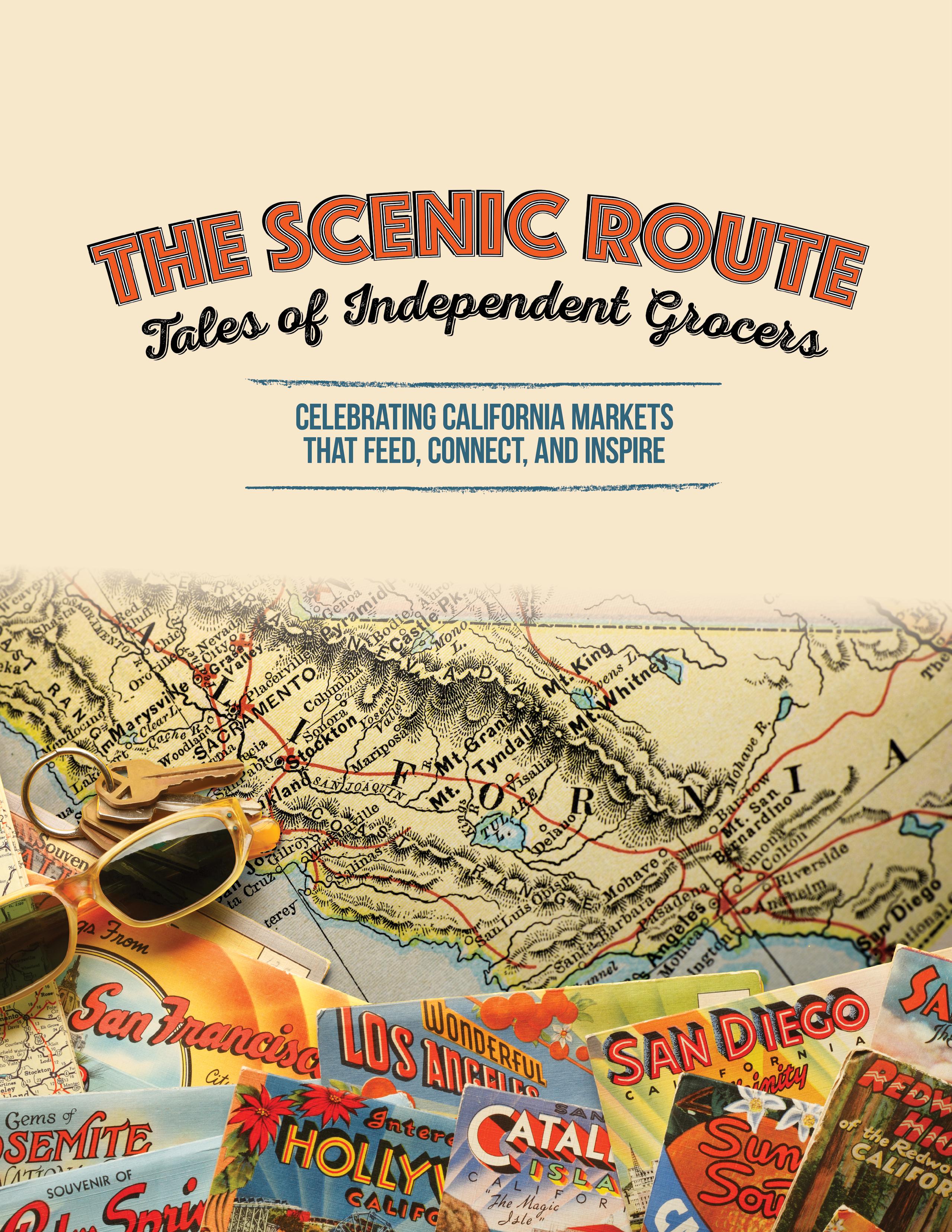
By Michele Fuller
California is a long, winding road of flavors, communities, and unexpected detours. Few know that better than the state’s independent grocers. Every town has its own rhythm, its own legends, and, more often than not, its own grocery store at the center of it all. Independent grocers are more than places to grab milk and bread. They’re gathering spots, problem-solvers, and neighborhood storytellers, rolling up their sleeves to serve their communities in fresh and surprising ways. So cue up your playlist, grab that latte, and settle in for miles of farmland, mountains, and coastline ahead. We’re hitting the road for some “Independent Tales,” the kind of stories you only find when you take the scenic route.
Our road trip begins in the tall pines and mountain towns, where Holiday Market, the flagship brand of North State Grocery, stands out for more than just its aisles of produce. The company, founded in 1962 by Richard Morgan, became 100% employee-owned by 2016—a rare model in California’s grocery industry. Only a small handful of grocers in the state share that distinction, making Holiday Market’s structure and culture especially unique.
That ownership shows up in the way you feel walking through the door. “We really focus on friendliness with the customer, cleanliness in the store, freshness of foods, and being fully stocked,” says Michel LeClerc, chief administrative officer of North State Grocery and CGA board chair. Simple goals on paper, but much harder in practice. What makes them achievable, he explains, is the
ownership mentality throughout the company, not just at the top: “It’s much easier for an owner to take on that challenge than it is for somebody that just sees themselves as a wage earner.”
It also keeps employees around. After about five years, when the value of their ownership really starts to show, many realize they’re building something far more lasting than just a paycheck. “Just like when you first buy your house, you don’t really see the advantages of your equity position,” LeClerc observes, “but five or six, seven years down the road, you can see the impact and it becomes very substantial.”
Like any independent, North State has faced its share of challenges and found creative solutions. One example came in Chester, CA, a small, remote mountain town that sits on the shore of
Lake Almanor, a resort area that brings a flood of summer tourists and a wintertime slowdown, making staffing a constant challenge. The solution: buying a restaurant across the street, converting it into employee residential housing, and bringing in J-1 Visa students to work during the summer. “It’s been a real shot in the arm, not only for our store but for the community as a whole,” LeClerc says. Restaurants and bars across Chester also benefit from these students who are passionate and eager to work. “It was a little bit outside the box, but it worked.”
For LeClerc, some of the most meaningful moments come from watching employees of all abilities thrive. “We have people working in our stores who are intellectually challenged or disadvantaged, maybe they have Down syndrome or severe autism, but we can provide them with a productive work environment where they can succeed and feel good about themselves,” he shares.
Among the qualities that set North State apart is its ability to adapt quickly, an advantage of being independent. While larger chains often struggle with nimbleness, Holiday Market can pivot to meet customer needs. If your favorite salsa or granola isn’t on the shelves, chances are it soon will be. “If you have a product you love and we don’t carry it, just ask the store manager. We’ll bring it in,” LeClerc explains.
For LeClerc, the lesson extends far beyond the store’s walls. In a state where legislative mandates often impose one-size-fits-all rules, independent grocers succeed precisely because they adapt to their communities. His advice: “Be a reflection of your community. Know your community. Your employees should reflect your community. Participate, interact, and just be part of the city or neighborhood you’re in.”

Sometimes it’s as simple as greeting customers, cleaning bathrooms, or gathering carts from the lot. Other times it’s stocking shelves or bagging groceries. Whatever the role, the pride these employees take in their work is unmistakable. “They’re contributing to the store. They’re contributing members,” LeClerc adds. “When you see the gratification they feel by coming to work and being a productive part of the team, an important part of the team, that just warms my heart.”
LeClerc lights up when he talks about employees of every background who find the right fit, grow into their roles, and succeed. “It’s rewarding for me to see people flourish and excel and do well,” he reflects. “That’s part of my job, putting people in the right spot. And if they’re not in the right spot, figuring out how to get them there.”
Leaving the pine forests and mountain lakes of the North State stores behind, our road trip winds south. The scenery shifts from rugged wilderness to golden hills and wide-open farmland. Soon, you’re driving into the quiet hills of Hollister, a town where tractors and Teslas share the roads and the local grocery stores feel like the heart of the community.
For more than 40 years, Hollister Super, which now includes three stores, Hollister Super #1, Hollister Super #2, and Windmill Market in San Juan Bautista, has been a champion of its community, supporting everything from Little League and bake sales to nonprofit galas. “Independent grocers really tie themselves into the community,” says owner Chang So. “We’re not just here to sell meat, canned vegetables, and leaf lettuce. We want to nurture the soul of our community by feeding people with good quality foods at a competitive price, but also by connecting them to resources and having local people, their neighbors, working here too.”
That philosophy came to life during the pandemic, when Hollister Super partnered with a local news outlet to share critical information with underserved residents. Brochures on COVID-19 vaccinations and community resources were distributed right alongside groceries. “Our role has kind of changed in terms of not just employing and supporting the community, but also informing the community as well.” So says.
and customers, not stock images. Shoppers lit up when they spotted family members in the displays, a reminder that the food on the shelves comes from the very hands of their community.
For employees, the store often becomes more than just a first job. So frequently runs into former staff members who have gone on to bigger opportunities, including one who worked for the Biden administration. In a more recent encounter, the former employee expressed, “Nobody really thinks of a grocery store as a stepping stone or launch pad, but I don’t know if I could have gotten to where I am today if I didn’t have the experience I got in Hollister Super.”

At Hollister Super, everything begins with people. “Whether someone is coming in for the first time or the hundredth, the customer service and the smiles that greet them are really important,” So explains. “That’s the culture we’ve been building for decades—where employees treat customers like family or friends dropping by to say hello.”
Freshness of their produce is another hallmark. Driving into Hollister, you pass fields and orchards, reminders of the bounty grown just minutes from the store. “You see apricots being grown as you’re coming into town. We’re trying to get those apricots. You see apples being grown, and we’re trying to get those apples into the store,” So explains. And with the store sitting on the edge of the Salinas Valley, often called the salad bowl of the world, much of the packaged salads, mixes, and kits on Hollister Super’s shelves are harvested, bagged, and boxed practically down the street. “That’s really what sets us apart,” he shares.
To keep that standard, a buyer makes four weekly trips to a South San Francisco market, hand-selecting produce by season and cost. And people notice. “Customers and even some vendors can’t believe the quality and the competitive pricing,” So says. Avocados, one of the store’s top sellers, rarely exceed $1.49. “It’s a labor of love.”
With a strong Hispanic customer base, Hollister Super makes sure its aisles reflect the traditions, flavors, and pride of the people who grow much of the region’s produce. During a recent remodel, the walls were lined with photographs of local farmworkers, real neighbors
That sense of connection extends beyond customers and staff to the larger independent grocery world. So believes no one should shoulder the challenges of running a store alone.“There are a lot of times when I don’t know the best or most effective way to solve a problem. But when you talk with other small grocery owners or independent operators, you often find they’ve faced a similar situation and have ideas you can glean from—so you come out of it better than when you started.” For So, the same spirit of collaboration that makes a grocery store the heart of a town also strengthens the network of independents across California.
Continued on page 20 ▶
From Hollister’s rolling hills, the drive carries us southwest, until the air begins to smell of salt and seaweed. The golden hills give way to crashing waves, surfers running with boards under their arms, and the easy coastal rhythm of Cardiff-by-the-Sea. Here, the grocery store is a destination in itself.
Step into Cardiff Seaside Market and you’ll likely be greeted by Jimmy Bayer, the legendary produce employee who knows every customer by name. He’s more than an employee—he’s a reminder that this place is about community as much as it is about food. And the food? Well, it’s not just locals who rave. With 4.7 stars and more than 2,300 Google reviews, one customer went so far as to write: “I have traveled to over 50 countries, and I can confidently say that this is the best grocery store in the world.”
Cardiff Seaside Market has earned that reputation over 40 years by staying true to its motto: to be the best neighborhood market anywhere. The team works hand-in-hand with local farmers and small businesses, giving them a platform to reach customers when bigger chains won’t. “We have the independence to start them up and feature them throughout our store and introduce them to the community,” shares Austin Davis, the market’s general manager.
and the perfect sandwich to carry a few blocks down to the sand. “The popularity of that meat has spread almost entirely through word of mouth,” Davis notes.
Inside the store, the experience feels like stepping into a boutique market: an in-house cuisine department run by chefs, vibrant local produce, curated natural products, and craft beers alongside conventional staples. The atmosphere is intentional; lighting, design, and upkeep make the store not just a place to shop, but a place to linger.

For Davis, the real secret ingredient isn’t the tri-tip, it’s the team. “Your business is in your people. Supporting them to the best of your ability is going to have returns far beyond whatever you’re putting into them,” he says. Department managers here operate like small business owners, curating their sections and bringing in new ideas. That trust shows up on the shelves, in the atmosphere, and in the relationships with customers and vendors.
That community-first mentality carried the store through the pandemic, when larger suppliers prioritized big-box retailers. Cardiff pivoted fast, buying goods from cruise lines that had been sidelined and repackaging flour from shuttered restaurants so families could have their basic necessities at home. Toilet paper from a docked ship might not sound glamorous, but it kept the California’s independent grocers shelves stocked when other stores couldn’t.
Seaside Market has long invested in its town, helping rebuild a stairwell down to the campgrounds and beach, supporting schools, cleaning up parks, and funding community projects that have shaped Cardiff into the coastal gem it is today. “These large contributions over the years have really helped grow the community and make it a desirable place to live,” says Davis. “It’s changed the character of the neighborhood.” The respect runs both ways: locals not only shop here, they protect the market as if it were their own.
If you’re just passing through, don’t be surprised if you leave with more than sunscreen and snacks. Seaside Market is home to the now-famous burgundy pepper tri-tip, dubbed “Cardiff Crack” by devoted locals. What started as a simple marinated cut has become a cult favorite shipped across the country,
And so, whether it’s a tri-tip sandwich headed to the waves, a breakfast burrito worth an early-morning detour, or a greeting from Jimmy in produce, Cardiff Seaside Market is more than a grocery stop, it’s a reason to pull off the highway and taste what makes California’s independents unforgettable.
California’s independent grocers remind us that a market can be much more than a place to shop. They are landmarks, storytellers, and neighbors who keep their towns moving forward. What ties them together isn’t just independence, it’s people: owners who care deeply and see opportunity in challenges, employees who treat customers like family, and communities that rally around their markets.
So as the miles roll on and the playlist shuffles to a new song, remember that some of the best stops along the road aren’t listed on any travel guide. They’re the neighborhood markets where the welcome is warm, the produce is fresh, and the story is still being written.
By Grace Becker
Driving through Sacramento’s Land Park neighborhood, you’ll find everything you need for a great gathering at Superette Market. Greeted by cork floors, a globe lantern light fixture, and retro interiors, Sacramento’s newest market offers everything you need for entertaining–including snacks, dry goods, housewares, and gifts.
“It really is this space of sharing food. Enjoying food really is what it’s about,” said Superette founder and owner Sophie Mosgrove.

The shelves of this 600-square foot market are stocked with unique items for every host and food-lover including chocolate shaped like dominoes, an extensive assortment of tinned fish, and even algae cooking oil. “With the advent of the digital space, like Instagram, people are seeing a lot of these brands online. This has been a great opportunity for people to have a place of discovery,” said Mosgrove.

Mosgrove opened Superette this June after 15 years in the food industry and lots of dreaming. “ I grew up in a family where food was really important. My dad is a phenomenal cook.” said Mosgrove. “And so my love of food has spanned my entire life.”
Her entry point into the food industry was cheese. “ I have really, always loved cheese,” Mosgrove shared. “In my senior year, I worked at this grocery store and I kept joking with people that once I graduated college, I was going to go on to be a cheese monger.”
Her dreams of working with cheese were realized when she landed a job at Cowgirl Creamery. She went on to spend a decade in cheese, working in both the San Francisco restaurant scene and supporting the cheese program at a wine shop in Los Angeles. After some time in food purchasing for a Bay Area distributor Fresca Italia and a period at Williams Sonoma managing the company’s perishable goods,
Mosgrove and her family relocated to Sacramento. Though she was still consulting with a few direct-to-consumer food brands after the move, she found her mind wandering back to her dreams of opening her own shop.
At the beginning of this year, she dusted off her old business plan and got to work on Superette. “This store is a smaller version of what I had been envisioning for the last 15 years. In January, I hunkered down, rewrote the business plan, sourced some capital, and then started looking for spaces and everything really quickly fell into place after that.”
For many years when the shop was still a daydream, Mosgrove would stash away inspiration, saving interior design photos and brands that she would someday like to carry in her imagined storefront. The result of her imagination is an intimate market that allows each product to shine.
“When you walk into Superette, the packaging pops. I wanted the space to be neutral, to really highlight the product, because for me it’s about the product,” said Mosgrove.
Her rubric for determining which products land on Superette’s shelves is: 1. Is it a good product? 2. What does the packaging look like? And finally, 3. What is the cost? This project has allowed her to work with brands she has long admired, and has reconnected her with colleagues from her career in the food industry a decade ago. And of course, she’s brought in a hand-selected assortment of cheeses.
Since opening, Sacramento’s shoppers and food enthusiasts have shown out to support Superette. “Food and California are so synonymous,” she said. “Whether it’s LA or SF or Sac, it’s like we’re all connected in this food identity because we’re all Californians.”
Even as shoppers tighten their purse strings, Sacramento is still embracing what Superette has to offer. “These can be seen as luxury items, but I also think that there’s something to be said about people investing in themselves or investing in food for these small joys.”
Down the line, Mosgrove plans to leverage the power of food to further integrate into the community. “ I am figuring out additional ways to use this space as a third space, really.” So far, she’s already collaborated with local coffee roaster Camellia on custom coffee beans and hosted a cake decorating class. Coming up, she is hosting a local supper club, and hopefully in the near future, a cheese class. ■






By Tim Townsend
For decades, San Diego was California’s only major city where Republicans dominated local politics. Once underpinned by a large military community and a conservative-leaning working class, the region has undergone a dramatic transformation, with Democrats now controlling the San Diego Mayor’s office, City Council, County Board of Supervisors, and most of the region’s other high-profile elected offices.
This political change is already having direct impacts on the region’s business climate. San Diego’s new local elected officials are willing to enact progressive local laws that would have been unthinkable in the past for the area, known for its laissez-faire approach to businesses.
Grocers recently had a watershed moment when the City of San Diego passed the nation’s first ban on digital-only coupons—a policy directly targeted at grocery stores. Thanks to an effective local engagement strategy led by the California Grocers Association (CGA), the digital coupon ordinance was modified to make it feasible for grocers.
The ordinance is just one example of how San Diego’s new political reality creates an urgent need for businesses and their associations to proactively engage with local elected leaders—or else risk disruptive local laws.
San Diego’s political evolution reflects a broader trend seen across California, where traditionally pro-business cities like Fresno, Anaheim, Modesto, and others are shifting politically to the left. San Diego serves as a valuable case study for examining how political shifts in local communities are forcing businesses to pay attention to regions they once considered friendly.
Continued on page 26 ▶

For most of its modern history, San Diego was dominated by conservative politics and pro-business forces. The region launched Pete Wilson’s career after he was able to parlay three terms as San Diego Mayor into serving in the U.S. Senate and as California Governor.
“During this time, the idea that San Diego would tightly regulate businesses, much less grocery stores, was unthinkable,” said Tim James, director of local government and enterprise risk at CGA, who is responsible for the organization’s work in the region.
When San Diego County last voted for a Republican presidential candidate in 2004, Republicans outnumbered Democrats by more than 80,000 voters. This advantage initially eroded slowly and then accelerated rapidly. Fast forward to 2020, and Democrats had nearly 200,000 more voters.
“Around 2008, traditional Republican influence began to wane, and the San Diego region became more and more inclined to vote for Democrats,” said Patrick Bouteller, a San Diego-based government relations professional and former director of government affairs for San Diego Mayor Kevin Faulconer.
Voters’ changing social views, opposition to Donald Trump’s first term in office, and rapidly shifting demographics all contributed to the region’s political transformation—similar to what has driven changes in other formerly conservative cities in California. Between 2008 and 2022, the county added more than 300,000 new residents, with Latino and Asian voters comprising a growing share of the electorate, while the share of white voters declined from 50% to 43%.
Despite Democrats’ growing edge, Republicans continued to win local offices through the 2010s. Republican Kevin Faulconer was elected twice to the San Diego Mayor’s office, in a 2014 special election and again in 2016, while other Republicans held several seats on the San Diego City Council.
“Republicans stayed competitive in local races due to the strength of their long-running political infrastructure and ability to recruit moderate candidates,” said Bouteller.
Eventually, national politics cast a shadow too large to overcome. No new Republicans were elected to the city council after 2016, and Democrats now hold every seat. In the 2020 mayor’s race, no Republican made the General Election runoff. Democrats also took control of the county Board of Supervisors for the first time in 2020.
“It started with a few Democrats getting elected and replacing pro-business Republicans. Then we looked up and all the Republicans were gone,” said James of the political transition.
With Democrats firmly in control, their policy agenda has already produced a host of laws that directly impact businesses. The City of San Diego enacted a ban on most Styrofoam products. While not the first city to enact such an ordinance, it contributed momentum to a wave of local ordinances that led to a new statewide law banning Styrofoam and reducing single-use plastics, known as Senate Bill 54.
The city has also adopted an ambitious net-zero by 2035 climate goal, a COVID-era worker retention ordinance, and proposed a $25 minimum wage for tourism workers (which has not passed as of the time of writing). For its part, San Diego County has adopted a netzero policy, aiming to phase out greenhouse gas emissions by 2045.
With the full-scale political realignment, new power centers are still taking shape. “While business and taxpayer groups held significant sway in the past, more progressive stakeholders, including labor unions, are now a major driving force in elections and at City Hall,” said Bouteller.
Labor organizations and progressive groups developed the political infrastructure that has played a crucial role in the Democrats’ electoral success. Adding to labor unions’ clout, the region is home to Lorena Gonzalez, a former San Diego-based legislator who now leads the powerful California Labor Federation.

Even with their growing influence, labor groups have not had carte blanche to achieve their local priorities, unlike other parts of the state, where they have enacted top goals like large local minimum wage increases.
The region has a distinct moderate streak compared to established progressive strongholds. From 2004 to 2020, the county’s share of registered Democrats only increased from 35% to 42%— showing the electorate still has an independent streak, which moderates their elected officials.

“San Diego Democrats have wide-ranging ideological viewpoints,” said James of the elected officials now in office.
San Diego Mayor Todd Gloria has taken pragmatic positions on high-profile issues. Last year, he endorsed Proposition 36, which raised penalties for shoplifting and drug possession. Gloria has also adopted a tougher approach to homelessness and opposed a statewide rental control measure.
To have success in the region, there is a strong need to identify and build relationships with moderate Democrats.
Seeking to be the first in the nation, the San Diego City Council passed an ambitious ordinance this past April that banned coupons that are only available digitally. The council claimed the ordinance was needed amid rising food costs to ensure that seniors, individuals without internet access, and shoppers who don’t speak English have equal access to grocery store discounts.
Practical and logistical challenges immediately emerged for grocery stores, forcing them to face the prospect of printing mountains of digital coupons for customers. “The digital coupon ordinance was the first time that grocers confronted the new reality of San Diego politics,” observed James of the earthquake caused by the new law.
To make the ordinance workable, CGA engaged the city council to make adjustments that maintain the spirit of the law while also addressing grocers’ valid concerns.
“CGA approached the city council with an opportunity to create a model of how to do this the right way in communities across the country that also works for businesses. Ultimately, the city council

agreed, and we were successful,” said Bouteller, who lobbied for CGA on the ordinance.
The updated ordinance was unanimously approved in July and now allows grocery stores to offer alternative ways to provide all customers with identical discounts. It also exempts digital discounts offered through membership rewards programs and subscription services.
The entire episode demonstrates that San Diego leaders are willing to push progressive policies but are pragmatic enough to work with stakeholders to achieve positive outcomes. “Businesses need to be proactive in San Diego and maintain open communication with elected leaders to ensure local policies remain practical,” Bouteller said on the strategy needed.
Looking ahead, the next generation of rising stars for San Diego Democrats is yet to be determined. Because Democrats’ electoral success is still relatively new, the region has less predictable paths to the key offices and positions of power. That uncertainty has made relationship building even more of a priority.
“We are doing a lot of political and policy engagement in San Diego to make sure we have relationships with key elected officials. It’s a program that would have been laughed at eight years ago, but that’s the new reality,” said James.
Whether the Democrats’ dominant position is permanent remains an open question. Kamala Harris performed more poorly in 2024 compared to 2020, receiving 123,000 fewer votes than Joe Biden as Republicans gained ground with Latino and younger voters. It’s possible the region could become more competitive again in the medium term.
Regardless of what the future holds, San Diego’s political journey is a dramatic example of the voting shifts happening in formerly conservative, pro-business cities across California. San Diego’s transformation is a wake-up call for grocers everywhere: find ways to engage and build relationships with local leaders, or risk costly and disruptive policies. ■
C&S’s Omnichannel Media Network continues to provide industry-leading innovations to support the success of our valued Independent and Regional Grocers. This program seamlessly coordinates digital marketing and promotional efforts, including manufacturer promotions and digital coupons; on-site retail media; off-site retail media; and in-store merchandising.
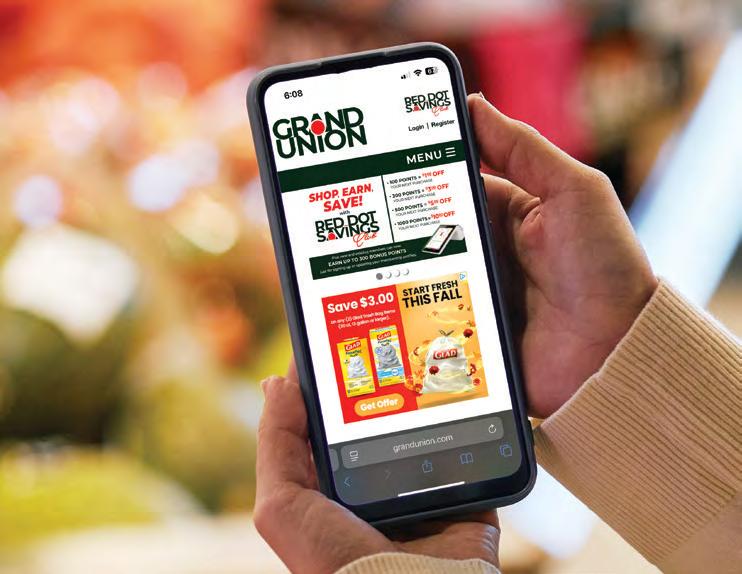


Retail media programs under the C&S Omnichannel Media Network include:
The flagship program that combines on-site and off-site media with promotional support to drive brand and retailer sales and profits.
A tailored media solution for midmarket and emerging brands to leverage retail media at scale.
A retail media solution that drives brand and retailer sales profits through on-site retail media.
Drives trial and adoption of new and extended brands.
Retailers: Contact your C&S sales representative. Manufacturers: Connect with your C&S category manager.










Recipient of the 2025–26 CGA Educational Foundation
$10,000 Legends of the Industry Scholarship
By Dorsey Griffith
Ryan Montez, this year’s CGA Educational Foundation $10,000 Legends of the Industry Scholarship recipient, admits he made a mistake decades ago by dropping out of college.
Today, thanks to a supportive employer and family, the scholarship money—and his own determination to get it done—he’s on his way to a bachelor’s degree.
The 42-year-old Montez is assistant district manager at Smart & Final, overseeing 25 stores in the San Diego area, from Oceanside to Chula Vista to El Cajon. Since 2008, he’s steadily climbed the company’s corporate ladder without a four-year college degree.
“I have gotten this far without the degree, but I do feel like having a degree will help polish me up,” he said. “I’ve already learned so much in the store. This will fine-tune all that experience.”
The Foundation’s scholarship program, initiated in 1998, has awarded $11.4 million to high school seniors, college undergraduate and graduate students who are employees or dependents of employees at CGA member companies. For the 2025/26 program year, the foundation will offer more than $925,000 in scholarship funds.
He told me, ‘You need to be at winter practices.’ I said, ‘I have to work.’ He gave me an ultimatum, so I made a decision.”
Montez quit college and kept working.
But Montez showed great leadership potential at Starbucks, and was promoted to store manager, leaving in 2008 for a district manager position with a frozen yogurt business. Underwhelmed with that job, in 2008, he joined Smart & Final. Although retail grocery was never in his sights, his wife and another friend who worked there urged him to take an entry-level job as an associate at the checkout counter.

A decorated high school athlete, Montez started strong with his high school grades but struggled toward the end with a bad case of “senioritis.” He graduated from Vista High School and received a full-ride scholarship to California State University, San Marcos to run cross country and track.
Montez lived at home but was paying rent and needed to cover other expenses, so he held down three jobs, including at Starbucks, Round Table Pizza, and a catering company, to make ends meet.
“I had to work,” he said, “but my coach and I didn’t see eye to eye on my work. He came into the store one day and confronted me.
Montez joined Smart & Final at a time of expansion and transformation. The CEO at the time, George Golleher, was shifting the low-cost company’s focus from serving business customers to making it a grocery store for everyday grocery shoppers.
Montez soon was working on the load crew, then managing the deli and freezer department at the Encinitas store before being promoted to “person in charge.” By 2011, he worked his way up at different stores to become a senior assistant manager, then a smart retail supervisor with the merchandising department, where he also took on the role of project merchandising manager.
“None of us really planned to be where we are,” he noted. “But it’s definitely worked out.”
He credits mentors Retail Operations Vice President Rick Morales and Merchandising Director Manny de la Huerta for the on-the-job training in merchandising. Through their guidance, Montez learned strategies for managing a store, merchandising for sales, project management, construction, and developing associates.
“Manny helped teach me how to make all of the arms of the company work together to accomplish our goal—opening new stores, remodeling stores and relocating stores.”
During his time at Smart & Final, Montez has been most impressed by the strong bonds among the store associates.
“The culture at Smart & Final cultivates relationships in the workplace and even outside the workplace,” he said. “Even when our time working together comes to an end, I stay in contact with them.”

Montez met Lorenza Crane 10 years ago, when she joined Smart & Final as a store manager in San Marcos. Crane had years of management experience but was struck by her new boss’s no-nonsense style.
“On my first day, he had me order the whole store,” she said. “I thought, you trust me?’ I guess he figured that I should know how to do it. He challenges you, gets you out of your comfort zone. Instead of getting babied or introduced in little steps, he trusted me.”
Years later, the two crossed paths again during a period of company expansion. They met at one of the new stores on the first day of business. “I was new to the role as District Assistant Manager,” Crane recalled. “He was a mentor. There was a lot of learning, and we worked together on projects. He was always very helpful and a phone call away.”
Another Smart & Final CEO, David Hirz, who joined Smart & Final in 2010, helped motivate Montez to go back to school. Hirz championed incentives for associates to expand their horizons through certificate and tuition reimbursement programs. Montez enrolled in Cerritos Community College in Norwalk.
“I have gotten this far without the degree, but I do feel like having a degree will help polish me up, I’ve already learned so much in the store. This will fine-tune all that experience.”
“He really pushed us to build an associate’s degree education,” Montez said. “That’s how I did it. It took me two and a half years.”
In 2016, Montez received his WAFC Retail Management Certificate, intending to continue coursework toward an associate’s degree and then a bachelor’s.
“My daughter had just been born, and I was working 50 hours a week at my job and going to school,” he recalled.
“I thought I’d take a quick break,” he recalls. “Then life got busy. I committed the cardinal sin.” By 2016, Montez had reached the position he currently holds—Assistant District Manager, and has become a major advocate for the certificate program.
“Twice a year, we hold meetings with the local community colleges to help our associates get enrolled in the certificate program.”

In 2023, it dawned on Montez that the break he took after earning his certificate had lasted seven or eight years.
“I went, ‘Wait a minute. You are not practicing what you’re preaching,’” he said. “You are advocating for this, but you didn’t see it through yourself.”
In the Spring of 2025, Montez completed his associate’s degree in business administration at Cerritos College. Through an online program at Boise State University, Montez is now pursuing a Bachelor of Business Administration degree. Continued on page 32 ▶
Montez is eager to dive into some areas of the industry he knows less well, especially supply chain management.
“I have always been directly involved in operations,” he said. “I’ve dabbled in merchandising, but my work has been about the end user of the industry. I am looking forward to courses that dive deeper into that side of the business—how the product comes in, from inception to the warehouse, and all the interfaces of what they do on their end to help get the product from receiving to our stores. It’s something I’ve never been part of.” Montez also wants to know more about grocery marketing, the data that is collected and how it’s used. He also recognizes the need for a solid understanding of how AI can enhance store efficiency and cater more precisely to customer demands.

Juggling a demanding day job with child rearing and full-time schoolwork is par for the course for Montez, and he credits his wife for helping make it possible.
“My wife and I have been together for 25 years,” he said. “I can’t even tell you how thankful I am to have her in my life. She handles everything outside my work and school responsibilities. She makes it easy for me.”
As the father of a now 12-year-old, Montez makes sure he reserves plenty of time for his daughter and their family activities.
“Our company got computer-aided ordering two and a half years ago,” he said. “We also recently launched with a company to automate ordering for produce and meat. I’m a big advocate.”
“I come home from work and do homework so that all my time off can go to my daughter and wife.”
While some worry that this technology will hurt jobs, especially for leads, he said, people still have to put the data into the system or the computer program to write customer orders.

“I believe AI will help us get better for our customers and will not impact our associates. It will help them,” he said. “I hope some of my classes cover it.”
Mostly, he said, he wants a four-year college education to “be a stronger leader, a better leader for the team I am managing.”
“I come home from work and do homework so that all my time off can go to my daughter and wife,” he said. “I try to stay ahead on my schoolwork because stuff happens.”
During a recent trip to New Mexico, for example, Montez said he knocked out 12 assignments in the first two days and had the rest of the trip to enjoy with his family.

Montez is also grateful for Smart & Final’s tuition reimbursement program ($1,500 per year) and the $10,000 CGA Educational Foundation scholarship.
“It takes a huge weight off of my shoulders in terms of funds for school,” he said. “School is expensive. The funding alleviates some of that pressure.”
Montez hopes to graduate in 2027. And he doesn’t plan to stop there.
“I would like an MBA,” he said, “then see where that goes from there. I live with the motto, ‘If you are happy where you are, stay. If you see an opportunity and want to take it, by all means, do it.’ Right now, it’s with Smart & Final and continuing to grow with our organization and helping our organization grow, as well.” ■


The race to replace Gov. Newsom has been prone to fits and starts
By Nate Rose — CGA Vice President of Communications and Public Affairs
From Arnold Schwarzenegger to Jerry Brown and Gavin Newsom, Golden State governors have long been defined by a certain star power. So, it was unsurprising that early stages of the state’s 2026 gubernatorial campaign have been slow to take shape as Democrats waited to see if former Vice President Kamala Harris would run. Harris’s official exit from the race in early August had a cascading effect as other Democrat candidates fought to demonstrate momentum in the first days following her announcement. While some touted their fundraising strength, others faded. Lieutenant Governor Eleni Kounalakis, long considered a serious contender, was one such example. Having failed that initial fundraising test, Kounalakis also left the gubernatorial race to instead focus on the State Treasurer position.
On the heels of the Harris announcement, former Congresswoman Katie Porter visited the CGA Board at its annual August board meeting. She was coming off a string of positive news. Her fundraising was strong, and early polls showed her to be leading a crowded Democrat field.
At the CGA meeting, Porter fielded questions from members and demonstrated a grasp of the problems facing grocers and Californians more broadly. A particular moment that resonated with the room occurred when the former Orange County congressional representative pointed out that while grocers are in the volume business, lawmakers shouldn’t be.
The positive news has continued for Porter as more recent polls continue to suggest she is the current frontrunner to replace Newsom.
Despite Porter’s momentum, the idea that the race still lacks a certain star quality persists. It’s fair to say we aren’t quite there yet in terms of a settled field of candidates.
Rumors are swirling that Sen. Alex Padilla has his sights set on the Governor’s mansion. To date, he has not ruled out running. If he were to announce a bid for governor, his entrance would likely clear more of the Democrat field.
Rick Caruso joining the fray is another possible curveball rumored in Sacramento. A Los Angeles real estate developer, Caruso is widely seen as someone who could do well with both moderate and conservative voters if he were to run as an independent. As someone operating outside of the traditional California Democrat Party structure, California politicos
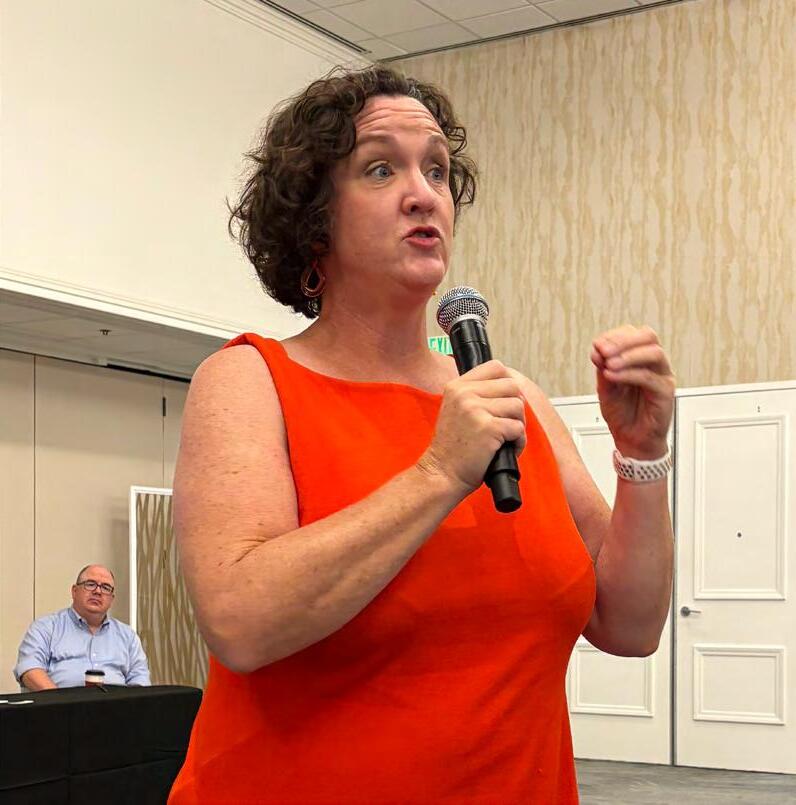
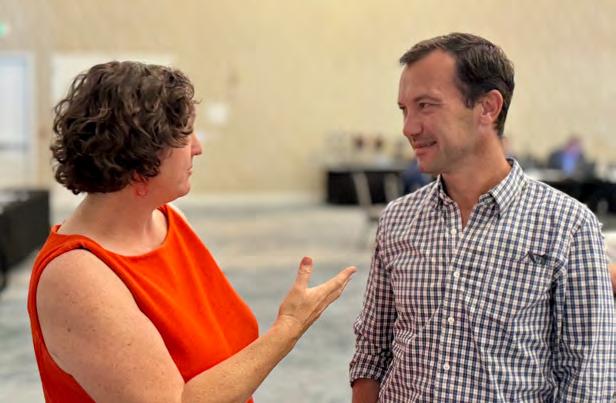


as esteemed as Willie Brown believe he would be a better contender for governor than Los Angeles Mayor—a position he previously ran for and failed to win.
As if California needed additional high stakes politics, redistricting provides another wrinkle. California will host a special election on November 4, 2025 to decide if the state should conduct mid-term redistricting outside of its usual independent redistricting process. This bid is known as Prop 50. Currently facing an uphill fight to convince voters, Democrat candidates for governor will have to decide how much skin in the game they put towards this political gambit.
While Democrats still rule the roost in California, there are also two serious Republican candidates. Riverside County Sheriff Chad Bianco leads the way in fundraising, and in an
environment where Californians overwhelmingly voted to approve Prop 36’s retail theft and crime overhaul, his messages could resonate. In addition to Sheriff Bianco, Steve Hilton, who is a British political strategist and frequent Fox News guest, is in the race and jockeying with the Riverside law official for Republican endorsements.
It’s important to remember CGA has not endorsed any gubernatorial candidate. In the coming months, the industry will have additional opportunities to meet candidates, and this is by no means limited to Democrats. The Association is committed to supporting a candidate who has a strong chance of winning, but also one who understands industry issues. So fasten those seatbelts, it’s likely to be a bumpy ride. ■


The CGA Board of Directors and invited guests spent the day participating in a highly provocative and immersive educational experience to stimulate ideas and forward-looking conversations on the future of grocery retailing. The day included lunch overlooking the Los Angeles Memorial Coliseum and concluded with dinner in beautiful Santa Monica.
The first stop was the Iovine & Young Academy at the University of Southern California where we heard from Google’s expert on artificial intelligence in retail and USC professors who are teaching the next generation of entrepreneurs and designers. The group participated in a first-of-its-kind breakout exercise to design the store of tomorrow using “Abby” a customized AI store design tool.






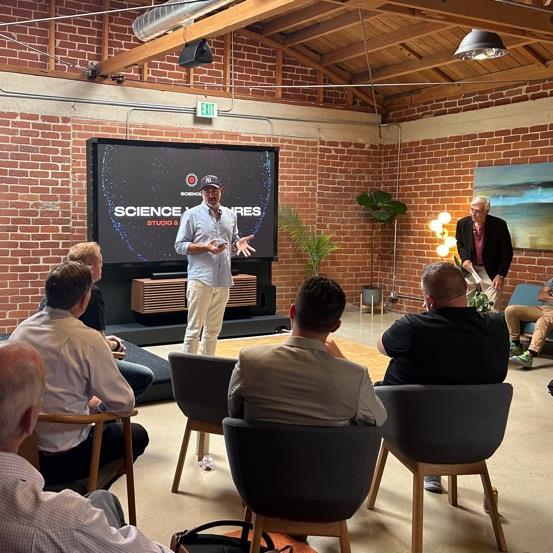
We visited the IMA Members Lounge to learn about the strategies for embracing the “exponential” growth of technology in retail. The group heard from an accomplished angel investor and the founders of several startups that are building the next generation of consumer brands and AI marketing tools.
We finished our day visiting Santa Monica’s Third Street Promenade for a conversation on the factors that contribute to retail’s boom, bust and reinvention lifecycle. We visited an innovative retail concept that blends a physical storefront with social media through featuring paid influencers selling products online live via Tik Tok.

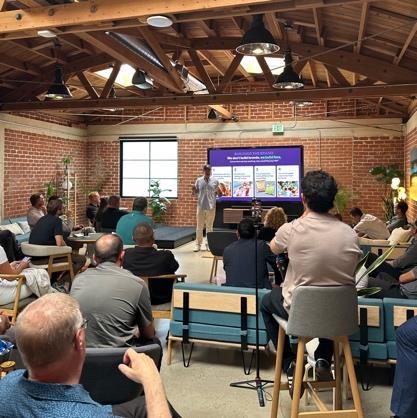

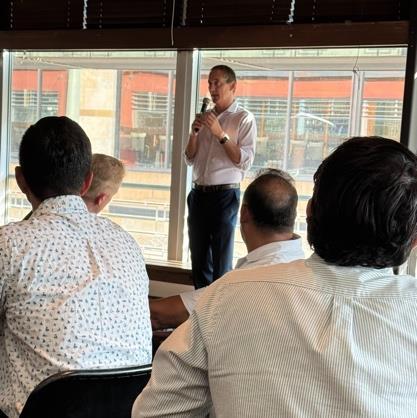


CGA welcomes the following members:
California Bank & Trust
520 Capitol Mall
Sacramento, CA 95814-4716
Contact: Robert Meyer, Sr. VP, Food & Agribusiness
E-mail: robert.meyer@calbt.com
Phone: (916) 341-4928
Website: calbanktrust.com/business/
Egg Unlimited
17875 Von Karman Ave Ste 450 Irvine, CA 92614-6212
Contact: Tim Cohen, Chief Executive Officer
E-mail: tcohen@eggsunlimited.com
Phone: (714) 504-7580
Website: eggsunlimited.com

RiskLimiter By Gleason Technology
360 Goucher St Ste 3
Johnstown, PA 15905-3400
Contact: Brian Rosen, President/CEO
E-mail: brian.rosen@gleasontech.com
Phone: (215) 620-4689
Website: gleasontech.com

WinCo Foods, Inc.
650 N Armstrong Pl Boise, ID 83704-0825
Contact: Chad Lamer, Vice President, General Counsel
Website: wincofoods.com

Concept Store Fixtures International
311 S Regional Rd
Greensboro, NC 27409-9680
Contact: Catherine Kouris, Marketing Director
E-mail: ckouris@conceptfixtures.com
Phone: (450) 582-3017
Website: conceptfixtures.com

Lexius
1024 Grizzly Peak Blvd Berkeley, CA 94708-1526
Contact: David Elskamp, Chief Executive Officer
E-mail: david@lexius.ai
Phone: (415) 723-509

Walmart Inc.
702 SW 8th St Bentonville, AR 72716-6209
Contact: Kevin Loscotoff, Dir., Public Affairs & Government Affairs Website: walmart.com

Woodlands Market
750 College Ave
Kentfield, CA 94904-2560
Contact: Mark Garwood, President
Phone: (415) 991-6315
Website: woodlandsmarket.com

DoorDash, Inc.
303 2nd St Ste S800 San Francisco, CA 94107-3631
Contact: Paul Monteverde, Sr. Manager, Business Development
E-mail: paulm@doordash.com
Phone: (310) 387-2779
Website: doordash.com
Ottimate
490 43rd St #105
Oakland, CA 94609-2199
Contact: William Thompson, Dir., Growth Marketing
E-mail: will.thompson@ottimate.com
Phone: (508) 414-8971
Website: ottimate.com
Water Source One PO Box 163535
Austin, TX 78716-3535
Contact: Kent Smith, Dir., Sales – West
E-mail: ksmith@watersourceone.com
Phone: (650) 279-7018
Website: watersourceone.com




BY GRACE BECKER
This summer, Sephora partnered with Lyft on a promotion to drive potential customers to its retail locations. The four-day event, which overlapped with Amazon Prime Day, provided customers with a $20 credit for one-way rides on Lyft to participating Sephora locations. There, customers received in-store guidance and discounts of $10 on any purchase over $50. Select Sephora stores in New York City, Los Angeles, San Francisco, Chicago, and Seattle participated in the promotion.


With snacking down thanks to GLP-1 weight-loss drugs, protein is the next big thing. David protein bars made a splash with their metallic gold packaging and bars that boast 28 grams of protein, no sugar, and 150 calories. Now, the brand has branched out to...fish? David debuted boxes of Wild-Caught Pacific Cod that call out the product’s 23 grams of protein, 100 calories, and 0 grams of sugar. Each package includes four 6-ounce, flash-frozen fillets for $55. The fish is boneless, skinless, flash-frozen, and wild-caught in Alaska.

davidprotein.com
Now that summer is in the rearview, there’s no question that matcha was the drink of the season. Driven by a combination of social media hype and Japan’s tourism boom, the matcha craze has contributed to Japan’s recent matcha shortage. Compounded by record-breaking heatwaves hitting crops in Kyoto, the hot weather has made for poor harvests amid soaring demand—so much so that it’s suddenly in short supply. Many retailers have set limits on how much customers can buy to keep up.

Dime is flipping the narrative around MSG. An Asian woman-owned brand, Dime was created to end the false narrative around MSG and celebrate the flavors of Asian culture. With consumers embracing global flavors and cultural authenticity in the grocery aisle, Dime seeks to challenge the long-standing stigma around MSG, offering a new umami-forward pantry staple to meals and snacks. The seasoning comes in three varieties: The OG, Korean Chili, and Yuzu Lemon Pepper.

www.dimemsg.com

pearl.davidsbridal.com
In the midst of wedding season, David’s Bridal launched Pearl Planner, a free AI tool to help couples manage wedding tasks. Pearl Planner gives users a single cohesive workspace for wedding management and features over 100 guided tasks, such as organizing guest lists, touring venues, building a wedding website, and designing announcements. The tool includes features like a dynamic timeline that adapts to changes, a style quiz, vision boards, a smart task board with actionable steps, curated recommendations, a chat assistant, an AI website builder and store appointment integration.
UK-based sustainable wellness brand SURI created an eco-alternative to the electric toothbrush. The sleek SURI Sustainable Sonic Toothbrush is made primarily from plant-based and recyclable materials without compromising on a superior clean. While SURI estimates that global disposal rates of toothbrushes amount to 4 billion, electric models are proven to help consumers achieve a better clean, reducing plaque by 21% and gingivitis by 11%. Designed in California, SURI’s sonic toothbrush is built to be easily repaired and features an aluminum handle and replaceable plant-based head.






























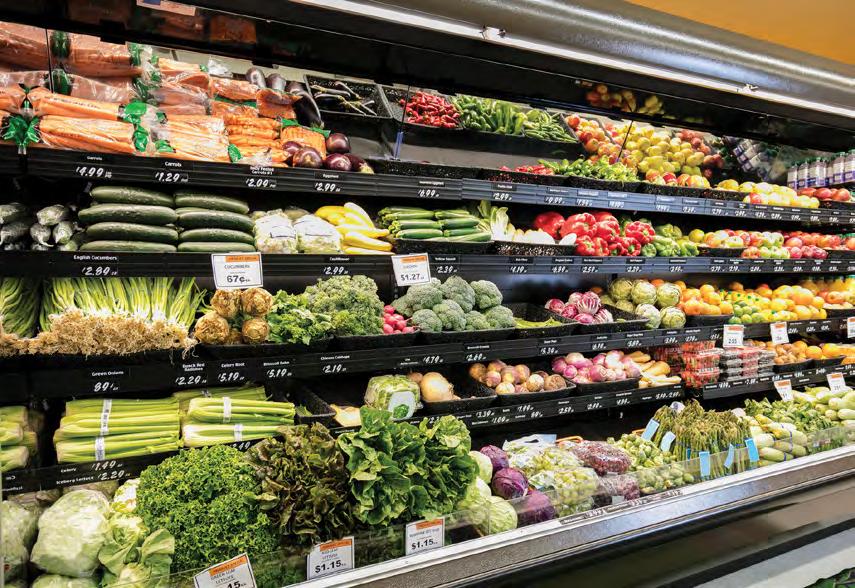

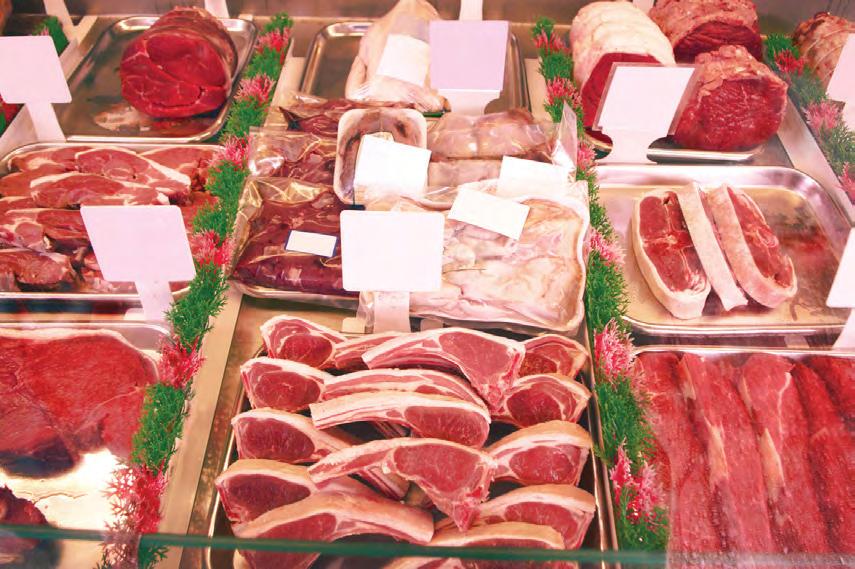









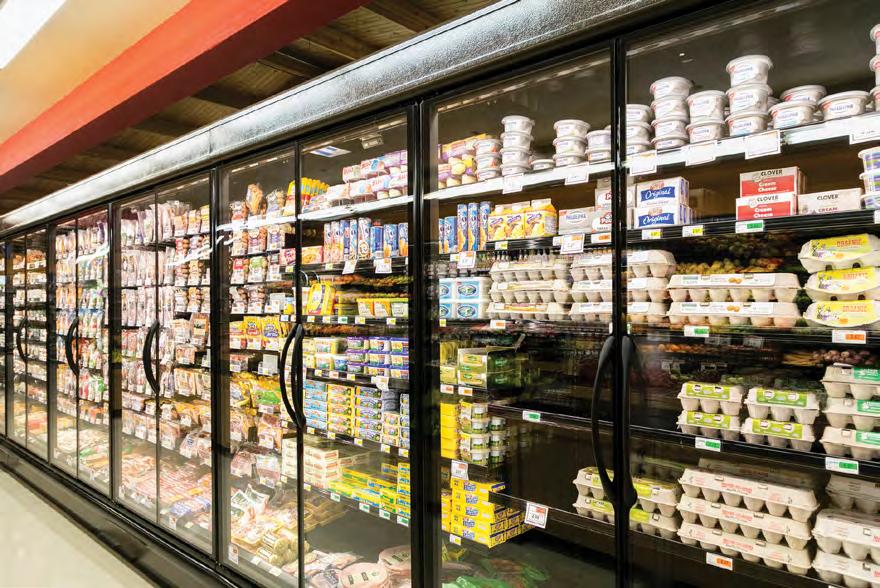





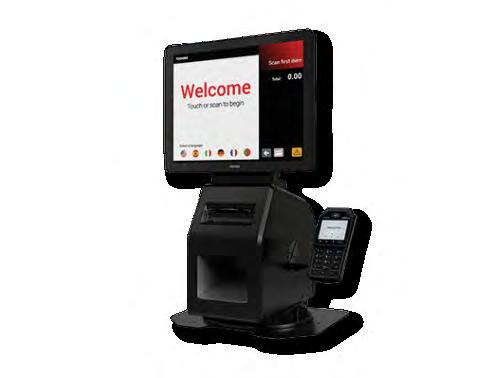



KIMBERLY RAE MILLER WRITER
Just a few weeks ago, my cart was all popsicles, chips, and hot dog buns. Summer grocery runs were loose and indulgent— snacks for camp, ice cream after dinner, and whatever could be tossed on the grill while the kids ran barefoot in the yard.
Now, those same kids are carrying lunchboxes, and my list has shifted overnight. Suddenly, I’m thinking about sandwich fixings, healthy snacks that fit in little containers, and breakfasts that can be eaten in a rush before the school bus arrives. What felt carefree in July now feels structured and intentional.
At the beginning of the school year, I always shop with ambition. A new lunchbox practically begs to be filled with something creative. I start out strong: bento-style meals with cut-up fruit, tiny crackers, cheese cubes, and homemade muffins. I find myself wandering the aisles for single-serve dips, fun-sized produce, and snack packs that make the lunchbox look colorful and exciting. It’s a little idealistic, but it feels good to start the year with that energy.
Of course, as the weeks roll on, reality settles in. Between after-school activities, homework, and tired kids, my lofty
lunchbox plans give way to what’s fast and foolproof. The Pinterest-worthy spreads are quickly replaced by grab-and-go yogurts, granola bars, and the kind of snacks I know my kids won’t trade away at lunch. Convenience sneaks back in, and I find myself gravitating toward foods that save me time in the morning and spare me arguments in the evening.
There’s also the matter of resetting expectations after a summer of looser rules. All season long, we say yes to more sweets, more grazing, more ice cream cones “just because.” September requires a reset—not only in bedtime routines but in what fills our kids’ plates. That can feel like a shock to the system for them and for us. Grocery
trips become about finding that balance: something nutritious but still fun, foods that make the transition back to structure a little smoother.
Shopping in September is about more than filling the fridge—it’s about finding a rhythm. Parents like me are walking the aisles in search of things that fit into our new schedules, our kids’ changing appetites, and our hope that we can keep it all together just a little longer. The cart becomes less about indulgence and more about endurance. Summer may have been about popsicles and spontaneity, but the school year is about packed lunches, weeknight dinners, and the little wins that keep families like mine chugging along. ■




















